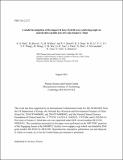| dc.contributor.author | Baek, Seung Gyou | en_US |
| dc.contributor.author | Biswas, B. | en_US |
| dc.contributor.author | Wallace, Greg M. | en_US |
| dc.contributor.author | Bonoli, Paul T. | en_US |
| dc.contributor.author | Ding, B.J. | en_US |
| dc.contributor.author | Li, M.H. | en_US |
| dc.contributor.author | Li, Y.C. | en_US |
| dc.contributor.author | Wang, Y.F. | en_US |
| dc.contributor.author | Wang, M. | en_US |
| dc.contributor.author | Wu, C.B. | en_US |
| dc.contributor.author | Yan, G.H. | en_US |
| dc.contributor.author | Chen, J. | en_US |
| dc.contributor.author | Zhai, X. | en_US |
| dc.contributor.author | Garofalo, A.M. | en_US |
| dc.contributor.author | Choi, W. | en_US |
| dc.contributor.author | Poli, F. | en_US |
| dc.contributor.author | Shiraiwa, S. | en_US |
| dc.date.accessioned | 2025-03-21T20:19:26Z | |
| dc.date.available | 2025-03-21T20:19:26Z | |
| dc.date.issued | 2021-08 | |
| dc.identifier | 21ja027 | |
| dc.identifier.uri | https://hdl.handle.net/1721.1/158678 | |
| dc.description | Submitted for publication in Nuclear Fusion | |
| dc.description.abstract | Lower hybrid current drive (LHCD) is beneficial for developing a steady-state operation scenario in a tokamak. This paper conducts a modelling investigation to identify an optimum rotation angle of the initial lower hybrid perpendicular (to the background magnetic field) wavevector for best matching the experimental RF current profile. It is hypothesized that central RF power deposition widely observed in the present-day LHCD experiments arises from wave scattering by turbulence. In a standard model without considering such interactions, the predicted power deposition profile is generally broad with off-axis peaking, not in agreement with experimental observations. A heuristic approach is adopted by introducing a spectral broadening mechanism by modifying the initial orientation of the perpendicular wavevector. The ray-tracing/Fokker-Planck solver GENRAY/CQL3D is utilized within the python-based pi-scope framework. A focus is given to identify the perpendicular wavenumber orientation angle with respect to the magnetic surface normal vector at the initial ray location. Our modelling study shows that rotating the perpendicular wavevector in such a way as to increase the initial poloidal component is effective in reproducing the centrally peaked current profile observed in normal shear plasmas on both EAST and C-Mod. These waves can readily be absorbed to the central plasma, which reduces the sensitivity of the power deposition profile to a slight change of the plasma condition. The same approach is also found to help broaden the off-axis power deposition profile in a reverse-shear EAST plasma, leading to a better agreement with the experiment. The results presented here suggest that spectral modification arising from edge density fluctuations in a tokamak may need to be considered in understanding wave propagation and absorption. A further experimental and theoretical/modelling study is vital as a reverse approach is adopted in this study. Our work suggests that mitigation or control measures are critical for parasitic effects occurring on the first pass in a reactor regime. | |
| dc.publisher | IOP | en_US |
| dc.relation.isversionof | doi.org/10.1088/1741-4326/ac2278 | |
| dc.source | Plasma Science and Fusion Center | en_US |
| dc.title | A model investigation of the impact of lower hybrid wave scattering angle on current drive profile in EAST and Alcator C-Mod | en_US |
| dc.type | Article | en_US |
| dc.contributor.department | Massachusetts Institute of Technology. Plasma Science and Fusion Center | |
| dc.relation.journal | Nuclear Fusion | |
